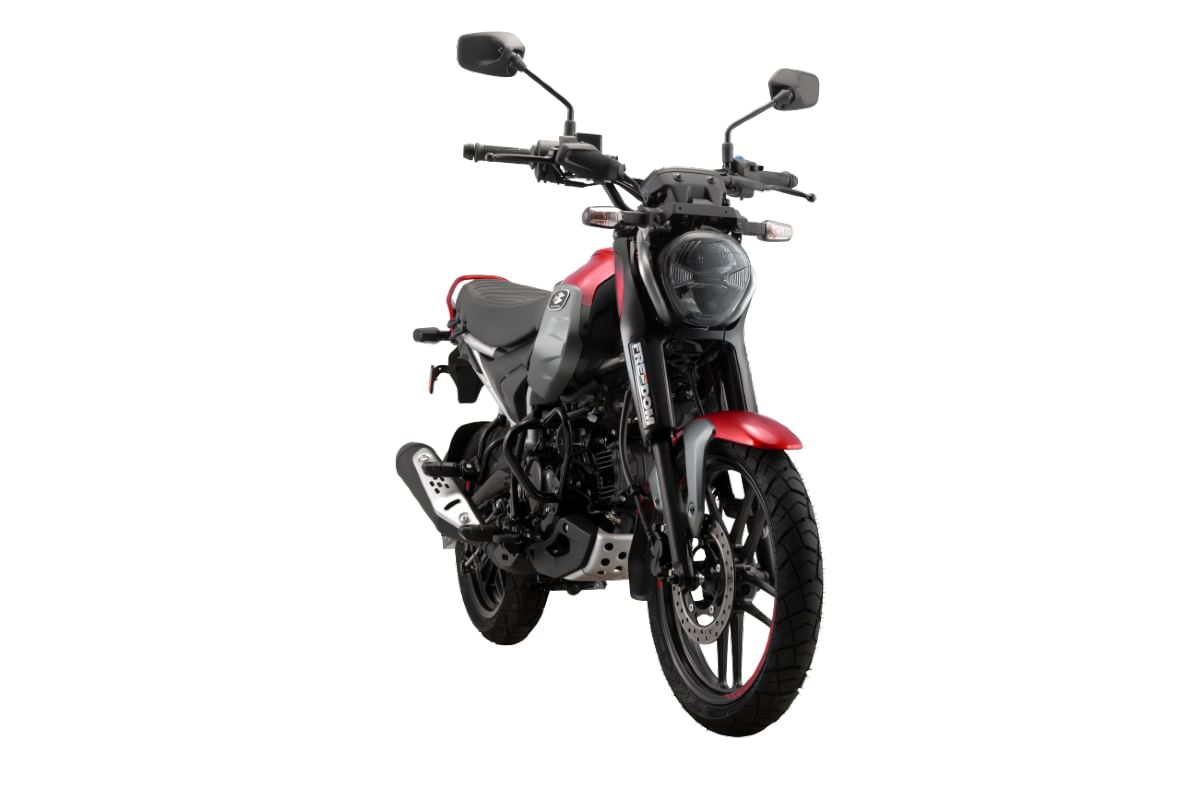To say that the mileage figures of the Bajaj Freedom 125 are a topic of hot discussion would be an understatement. The new Freedom 125 is the world’s first purpose-built CNG-powered motorcycle that also runs on petrol. We spent a couple of days with the bike and put it through our instrumented tests. Here are our findings.
Bajaj Freedom 125 real world fuel efficiency
We performed our routine tests on both petrol and CNG, which also meant that the city and highway runs were performed twice – once in each fuel.
Let’s begin with the numbers we got while running it on CNG. Filling up the Freedom’s CNG tank was a novel experience for us as this is the first time we took a two-wheeler to a CNG pump. Once done, we set off on our route and ran the Freedom for 49.9km in the urban jungle before ‘tanking’ up. The Freedom took 0.53kg, which meant it returned 94.15km/kg in the city.
We followed the same process before we started the highway run, and the Freedom’s numbers here were shockingly frugal. We ran the Freedom 125 for 61.6km on the open road, after which it took a scant 0.49kg. This meant it returned a whopping 126.2km/kg.
After the CNG test, we switched the Freedom 125 to petrol mode and repeated the entire process. Predictably, the numbers were much lower with 53.4kpl in the city and 62.37kpl on the highway.
Bajaj Freedom 125: what to keep in mind before filling CNG
Before we break down the numbers, we need to address an important issue regarding filling CNG in the tank. Achieving accurate fuel economy numbers for CNG can prove to be tricky because there is a lot of variability at filling stations. Each pump supplies gas at different pressures. Moreover, the pressure may also change at the same nozzle at a different time of day due to the variance in ambient temperatures. The Freedom has a small pressure gauge on the right-hand-side of the headstock, which should help you while you’re filling it up. Therefore, you will likely get different results depending not only on your riding style and weight but also on what sort of pressure you are getting at the pump.

However, what is clear is that in CNG mode the bike is capable of delivering exceptionally good mileage and 90-100km per kg is achievable with a little bit of economical riding. If you compare this number with a 100-110cc commuter that typically returns roughly 65kpl (ideal scenario) in the city, it is evident that Bajaj’s claims of the Freedom effectively halving your running costs compared to a petrol bike is entirely possible.
Bajaj Freedom 125 fuel efficiency analysis
The Freedom’s 124.58cc ‘sloper’ mill was developed with the intention of running on CNG and being a light sipper. To meet that criteria, there had to be some sacrifices when it came to output. With just 9.5hp and 9.7Nm of torque on tap, this is the least powerful 125cc bike on sale today. While its performance is more in line with 100-110cc bikes, this doesn’t really hurt it in the real world and we found the available performance to be more than sufficient for daily duties.
The engine is short-geared in the first four gears, which means less downshifts and more tractability – both advantageous factors when it comes to fuel consumption in the city. On the highway, the tall fifth gear helps keep the engine spinning at a lower rpm, which, in turn, helps the fuel economy.
At 149kg, the Freedom weighs quite a lot for a commuter, but with an 18kg metal cylinder under the seat, there are bound to be some compromises. To mitigate this issue to some extent, Bajaj has equipped the Freedom with a 16-inch rear wheel, which not only helps with the packaging but also reduces unsprung mass, thereby putting less stress on the engine. In a similar vein, the bike also runs slim tyres, which aid in reducing rolling resistance. All these factors help the Freedom 125 eke out exceptional mileage figures, in CNG at least. In fact, the base variant of the Freedom 125 comes with an even thinner 80-section rear tyre, compared to the other two variants.
While the Freedom’s mileage numbers in petrol are significantly lower, they’re in the ballpark of the TVS Raider 125, which is a peppy, youthful 125cc commuter. This should mean that, on average, you should be able to cover 350km (both fuels combined) before you need to fill up.
Also See:
Bajaj Freedom 125 review: Freedom of choice
Autocar India’s fuel efficiency testing
Our fuel efficiency testing routine starts off by first brimming the tank and ensuring that the bike is running the manufacturer's recommended tyre pressures. The bike is then ridden on fixed city and highway routes, where we maintain pre-decided average speeds that best mimic real-world scenarios. The payload on the bikes is kept constant by balancing rider weights and ballast, ensuring consistency across different vehicles and riders. At the end of the test cycle, the fuel tank is once again filled to the brim, giving us an accurate figure of how much fuel has been consumed, against the trip meter reading.










Comments
Member Login
Personal Details
No comments yet. Be the first to comment.